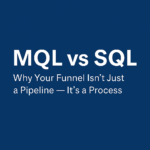On April 14, 2025, Google implemented a major revision to its long-standing Unfair Advantage Policy—a move that has sparked a wave of discussion across the digital advertising industry. This update allows advertisers to show multiple ads for the same business, website, or app across different sections of a single Google search results page.
Google Unfair Advantage Policy Update April 2025 :
Previously, Google enforced a restriction that prevented multiple ads from the same entity from appearing simultaneously on one search results page, regardless of their ad positions. This rule was designed to ensure a diverse advertising experience for users. However, with the latest policy change, advertisers can now place more than one ad per search results page, as long as each ad appears in a unique position.
This policy shift marks a significant change in Google Ads auction dynamics and has far-reaching implications for businesses of all sizes.

What Is Google Unfair Advantage Policy Update?
The Unfair Advantage Policy is part of Google Ads’ overarching advertising policies, aimed at maintaining fair competition and a positive user experience on the platform. Until recently, it restricted advertisers from:
- Serving multiple ads for the same product, business, or domain on a single search page.
- Creating duplicate or near-duplicate ads to dominate ad placements.
- Using techniques that attempt to manipulate ad visibility unfairly.
The intent was to prevent a single advertiser from dominating the ad real estate, thereby giving other advertisers equal opportunities and users more diverse results.
What’s Changing in April 2025?
As of April 14, 2025, Google has relaxed the restrictions of this policy. Now, businesses are permitted to display multiple ads for the same product, app, or domain, provided:
- Each ad appears in a separate and distinct ad slot.
- These ads are triggered independently through different auction dynamics.
- The ads offer value to users and are relevant to their queries.
In short, advertisers can now compete for multiple placements on the same search results page without violating Google’s policies—significantly increasing their potential visibility.
Why Did Google Make This Change?
There are a few key strategic reasons behind this policy shift:
1. Aligning with Evolving Search Behavior
User behavior on search engines has changed. People now scroll further and explore more ad formats, such as:
- Shopping ads
- Local services ads
- App install ads
- Video and carousel ads
Allowing multiple ads gives businesses a better chance of visibility across different formats, making it easier to meet users where they are.
2. Integrating Ads With Organic Results
Google has been experimenting with blended search results—where ads are seamlessly integrated with organic listings. With this policy change, advertisers can capture more real estate and complement their SEO efforts with paid visibility, boosting brand presence and credibility.
3. Revenue and Auction Growth
From a business perspective, Google benefits when more advertisers compete for more slots. The relaxation of the unfair advantage policy opens up new bidding opportunities, driving higher ad spend and increased auction competition.
Key Benefits of the Google Unfair Advantage Policy Update
Greater Visibility for Brands
Brands can now occupy multiple top positions across various ad formats, increasing the chances of capturing a user’s attention. For example, a business could display a:
- Text ad at the top of the page
- Shopping ad in the middle
- App install ad near the bottom
This holistic presence reinforces brand recognition and improves the overall click-through rate (CTR).
More Strategic Ad Placement
With auctions now separated by ad slot, advertisers have the opportunity to bid independently for multiple positions. This allows for better campaign segmentation, budget allocation, and targeted messaging based on user intent and behavior.
Enhanced Conversion Opportunities
By offering different types of ads—each optimized for a particular conversion goal (e.g., store visit, app install, product purchase)—advertisers can guide users through the funnel more effectively, leading to higher conversion rates.
Challenges and Risks for Advertisers
While the update offers exciting opportunities, it also presents several new challenges, particularly for small and mid-sized businesses.
Increased Competition and CPCs
With large brands now able to bid for multiple spots, competition for prime positions will intensify, likely leading to:
- Higher cost-per-click (CPC)
- Increased overall ad spend
- Difficulty for smaller advertisers to compete for visibility
Risk of Overspending Without ROI
Businesses attempting to dominate multiple ad slots without a well-optimized strategy risk draining their budget with little return. Each ad placement must be:
- Purposeful
- Aligned with business goals
- Measured for performance
Without this discipline, advertisers may end up paying more for fewer conversions.
Potential User Fatigue
If users see the same brand multiple times on the same search page, it may reduce engagement or even cause brand fatigue. Creative and ad copy differentiation is essential to keep messaging fresh and user-centric.
How Should Advertisers Adapt?
To navigate this evolving Google Ads landscape effectively, advertisers should consider the following strategic adjustments:
1. Audit Your Current Google Ads Strategy
Start with a comprehensive review of your existing campaigns:
- Identify top-performing keywords
- Assess which ad formats drive conversions
- Check for overlap or cannibalization across campaigns
Use this data to determine where multiple placements make sense.
2. Segment Campaigns by Intent and Format
Avoid redundancy by segmenting your campaigns based on:
- Search intent (informational, navigational, transactional)
- Ad format (text, shopping, app install)
- Device or location targeting
For example, use text ads for high-intent commercial searches and display or app ads for retargeting or awareness.
3. Implement Strong Bidding Strategies
Use Google’s automated bidding tools like:
- Target ROAS (Return on Ad Spend)
- Maximize Conversions
- Enhanced CPC
These can help manage multiple ad slots while controlling costs. Combine this with manual bid adjustments for high-performing campaigns.
4. Differentiate Your Ad Creative
If you plan to run multiple ads for the same business, each ad should have:
- Unique headlines and descriptions
- Different CTAs (calls to action)
- Varied landing pages
This ensures a better user experience and avoids redundancy penalties.
5. Test and Measure Performance
Use A/B testing to evaluate:
- Which combinations of ad formats and positions yield the best ROI
- How user engagement changes with multiple placements
- Impact on overall website traffic, leads, and conversions
Regular performance analysis will be key to sustaining success in this new environment.
What Does This Mean for SEO?
This policy update also indirectly affects search engine optimization (SEO):
- More ads on a page mean organic listings may be pushed further down, making it harder for SEO efforts alone to drive traffic.
- Businesses may need to adopt a hybrid strategy, where paid ads support visibility while SEO continues to build long-term authority.
Investing in rich content, fast-loading pages, and high-quality backlinks will remain essential—but pairing this with intelligent PPC strategies will deliver the best results in today’s competitive landscape.
Who Will Benefit the Most?
This policy update will primarily benefit:
- Large advertisers with strong budgets and diverse product lines
- E-commerce brands using a combination of text and shopping ads
- App developers who want to appear in multiple ad types
- Agile marketers who can quickly test, learn, and optimize their strategies
Smaller advertisers can still compete—but they’ll need to be more strategic with their targeting, budgeting, and creative execution.
Final Thoughts
Google’s April 2025 update to the Unfair Advantage Policy is a game-changing move in the digital advertising ecosystem. By allowing multiple ad placements from a single business on one search results page, Google has reshaped the rules of competition—offering both risks and rewards.
For savvy advertisers, this is an opportunity to:
- Gain visibility
- Drive higher engagement
- Outperform competitors
But it also requires a smarter, more data-driven approach to Google Ads management. Brands must balance creativity, budget, and performance to truly capitalize on this change.
Frequently Asked Questions (FAQ)
Q1. Can I use the same ad copy in all placements?
No. Repeating the same ad copy in multiple placements could reduce user engagement and may not be as effective. Differentiate your messaging and landing pages for best results.
Q2. Will this increase my overall advertising cost?
Yes, in most cases. With more placements available, you’ll likely bid on multiple slots, leading to higher total spend. However, the increased visibility could offset this if conversion rates improve.
Q3. Is this applicable globally?
Yes, the policy change applies to all advertisers using Google Ads worldwide, effective April 14, 2025.
Q4. Can small businesses benefit from this?
Yes, but they must be selective and strategic. Focus on niche keywords, optimize ad quality, and avoid trying to dominate multiple slots without clear ROI.
Q5. How does this affect SEO?
More ads on a page may push down organic listings, making SEO more competitive. Businesses are advised to use both PPC and SEO together for optimal results.
Want Help With Your Google Ads Strategy?
Navigating this new policy landscape can be complex. Whether you’re a startup or an enterprise, our certified Google Ads specialists can help you:
- Optimize your bidding strategies
- Design compelling ad creatives
- Maximize ROAS and conversions
For more Digital Marketing Latest Updates Follow Popnewsblend.

Hi, I’m Prashant Jain — a curious soul, storyteller, and content creator at heart.I’ve always been drawn to the world of entertainment, travel, sports, health & lifestyle — not just as a writer, but as someone who genuinely lives these experiences. Whether I’m binge-watching the latest OTT series, exploring offbeat spiritual destinations in India, or diving deep into wellness routines and cricket match insights, I love sharing what I discover with like-minded readers.
PopNewsBlend is my way of blending personal journeys with meaningful stories — ones that inform, inspire, and keep you ahead of the curve. Everything I write comes from real observations, hands-on experiences, and a deep passion for understanding the world around us.
Discover more from Popnewsblend
Subscribe to get the latest posts sent to your email.







